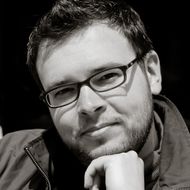Scholars Look at Publication Activity in Post-Soviet Countries

75% of papers published in post-Soviet countries are by Russian researchers. In total, about 3% of all papers published globally are from post-Soviet countries. The role of universities has grown over the last 30 years, with over half of all recent academic papers being made with the participation of university researchers. These are the conclusions made in a study of publication activity by scholars in post-Soviet countries.
Maia Chankseliani, University of Oxford, Andrey Lovakov, Senior Research Fellow at the HSE Centre for Institutional Studies, and Vladimir Pislyakov, Deputy Director of HSE Library, analyzed publications by scholars in post-Soviet countries: they looked at over 1,100,000 papers in English and national languages, with the conclusions of the study being published in Scientometrics journal.
The Soviet Union was among global leaders in physics and mathematics; it was particularly strong in oceanology, seismology, metallurgy, magnetohydrodynamics and chemical catalysis. Most academic research was carried out by research institutes related to the USSR Academy of Sciences or local academies in the union republics, as well as industry-specific institutes. Universities played a secondary role in research: about one-third of all researchers were employed by higher education institutions, according to the paper’s authors
At the end of the Soviet era, Soviet scholars were publishing 4.6% of the total number of academic papers. By 2012, the share of papers by researchers from post-Soviet countries had fallen to 2.7%, and by 2019, it had reached 3%. This is comparable to the share of African countries, but falls behind Latin America (5%), not to mention the leaders, China and the U.S.
The research productivity of scholars from post-Soviet countries significantly varies by volume, quality and subject, and the correlation between the number of publications by academy institutions’ staff and university staff has also changed.
Russia inherited a major part of the Soviet research infrastructure; the share of Russian researchers in publications by scholars from post-Soviet countries was 76% in 2019, and Russia has become the region’s leader by the number of publications in WoS largely thanks to the massive participation of higher education and the inherited system of academic research institutions. However, a considerable share of Russian publications in WoS are in lower-quality journals and are less cited when compared to publications made by scholars from some other post-Soviet countries.
Publication activity by scholars in different countries and the development trends vary considerably. Between 1993 and 2019, the number of publications grew fastest in Lithuania and Estonia (16 and 9.4 times respectively), and activity by researchers from Kazakhstan and Kyrgyzstan also increased rapidly. The number of publications by academics from Russia, Ukraine, Belarus and Uzbekistan also rose, although less quickly, while in Turkmenistan, it decreased.
Andrey Lovakov, Senior Research Fellow at the HSE Centre for Institutional Studies

On average, productivity by researchers in post-Soviet countries remains low. In 2019, only one paper was published for every 100 researchers in Uzbekistan, with four in Tajikistan, and 5-7 in Azerbaijan, Kyrgyzstan, Belarus, Ukraine, Georgia, Russia, Moldova and Kazakhstan. The indicators in Lithuania, Armenia and Estonia are considerably higher.
In the latter three countries, 10 to 27 papers were published for every 100 researchers. Publication activity correlates with the amount of expenditure on research in the GDP and budget, as well as the amount of money allocated per researcher.
The role of universities in the development of academic research has grown over the last three decades. In Georgia, Kazakhstan, Estonia, Lithuania and Latvia, researchers employed by universities and other higher education institutions participated in over 80% of the academic papers published in recent years. In Russia, Belarus, Turkmenistan, Ukraine and Kyrgyzstan, university authors participated in over 50% of recent publications. Armenia appears to be an exception, with the share of publications from university staff participation growing only slightly (36%) compared to the Soviet era.
Researchers in post-Soviet countries are most active in the natural sciences, a legacy of the rich academic traditions in this field. The share of papers concerned with the natural sciences varies from 53% (Lithuania) to 87% (Armenia) of all publications.
The fall of the Soviet Union and the Iron Curtain rapidly changed the situation with international cooperation for scholars in post-Soviet states. Even in the final years of the Soviet Union, joint publications with international researchers were a rare thing. In 2019, international researchers co-authored 39% of papers by Russian scholars, and over 70% of the papers prepared by academics in Ukraine and Belarus.
Andrey Lovakov
See also:
'Our Goal Is Not to Determine Which Version Is Correct but to Explore the Variability'
The International Linguistic Convergence Laboratory at the HSE Faculty of Humanities studies the processes of convergence among languages spoken in regions with mixed, multiethnic populations. Research conducted by linguists at HSE University contributes to understanding the history of language development and explores how languages are perceived and used in multilingual environments. George Moroz, head of the laboratory, shares more details in an interview with the HSE News Service.
‘It’s Thrilling to Have an Opportunity to Discuss Your Scientific Ideas with Interested People’
The International Laboratory of Dynamical Systems and Applications at HSE University–Nizhny Novgorod conducts in-depth theoretical and applied research, including the study of ocean waves, solar corona reconnections, volcanic phenomena, and ship stability. The lab’s researchers, who have received more than 20 significant research grants over the past five years, actively cooperate with Russian and international colleagues from China, Spain, the USA, the UK, Brazil, and other countries. Prof. Olga Pochinka spoke to the HSE News Service about the laboratory’s work.
'We Wanted to Create an Opportunity for Intercampus Teams to Engage in Promising Studies'
HSE University has announced the winners of the Project Competition in Basic Science Research for Intercampus Departments. The competition, which the university is organising for the first time, will provide funding to 10 research teams working on five topics. Four of the winning projects will be implemented by new research departments formed as a result of the competition.
Research Reveals RNA's Role in Cancer Progression
An international group of scientists and medical specialists, including HSE researchers, examined the role played by microRNA (miRNA) and long non-coding RNAs on the progression of ovarian cancer. Having analysed more than a hundred tumour samples, they found that miRNA can prevent cell mutation while long non-coding RNAs have the opposite effect of enabling such mutations. These findings can help design new drugs which act by regulating miRNA concentrations. The study was published in the International Journal of Molecular Sciences.
‘We Managed to Bring Together Specialists in AI, Pure Mathematics, and Neurobiology’
In early September, the HSE University Faculty of Computer Science hosted the international conference Computer Methods of Cognitome Analysis. The event was organised by the International Laboratory of Algebraic Topology and Its Applications at the faculty.
Russian Researchers Propose New Approach to Studying Facial Emotion Recognition
Researchers of the HSE University and the Southern Federal University (SFedU) have tested a new method for studying the perception of facial emotional expressions. They suggest that asking subjects to recognise emotional expressions from dynamic video clips rather than static photographs can improve the accuracy of findings, eg in psychiatric and neurological studies. The paper is published in Applied Sciences.
Academics Started Working Even More During the Pandemic
Academics’ work week became even longer during the pandemic. This is true of researchers from different countries, independently of their gender and specialisation, an international research team with HSE University participation found. Their working time during the pandemic was 51 hours compared to the usual 40. The increased number of working hours per week seems to have become part of the new academic norm. The results of the study were published in the Plos One journal.
HSE Researchers Develop New Method for Analysing Genetic Admixture of Populations
Researchers of the HSE International Laboratory of Statistical and Computational Genomics together with their international colleagues have proposed a new statistical method for analysing population admixture that makes it possible to determine the time and number of migration waves more accurately. The history of Colombians and Mexicans (descendants of Native Americans, Spaniards and Africans) features two episodes of admixture that occurred about 350 and 200 years ago for Mexicans and 400 and 100 years ago for Colombians. The results were published in the Plos Genetics journal.
Scholars from Moscow and Vladivostok Join Efforts to Study Institutes and Preferences in Economic Behaviour
Applications from HSE departments for the ‘Mirror Laboratories’ open project competition are open until May 20. One of the ‘mirror laboratories’ successfully operating today was created as a result of a similar competition in 2020 by economists from HSE University and Far Eastern Federal University (FEFU) to study institutes and preferences in economic behaviour. Alexis Belianin, Head of the HSE International Laboratory for Experimental and Behavioural Economics, talked about how peers from Moscow and Vladivostok collaborate.
Stress Disorders More Prevalent among Doctors due to the Pandemic
Psychologists from HSE University have joined their peers from Ekaterinburg to look into the impact of the pandemic on the mental health of Russian doctors. They found that medical staff are suffering from stress, anxiety, and depression more often than before. The results of the study were published in International Journal of Environmental Research and Public Health.


